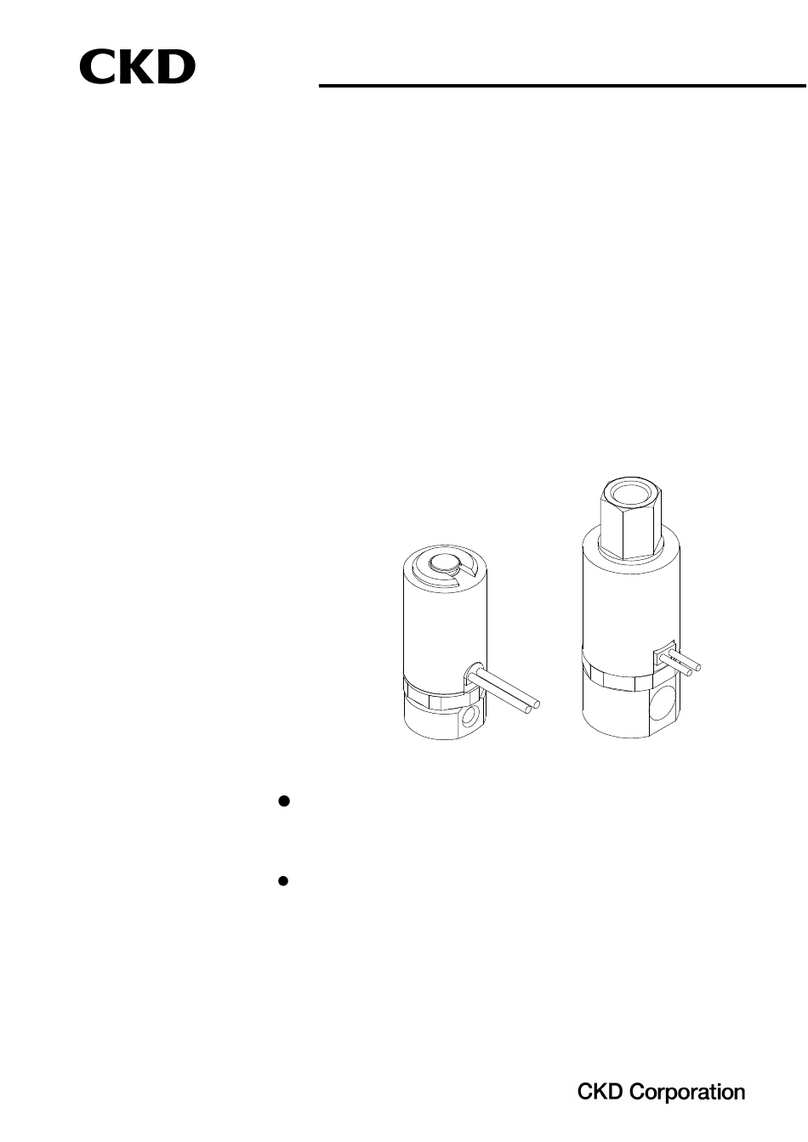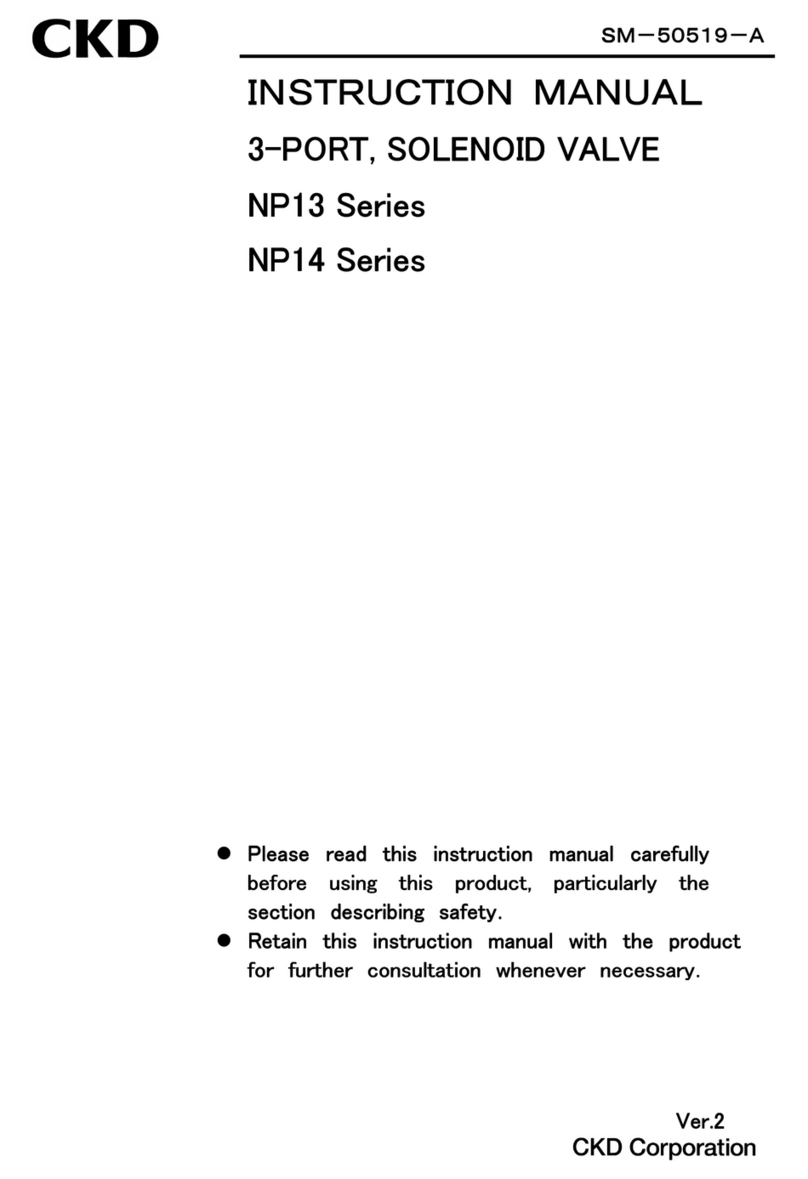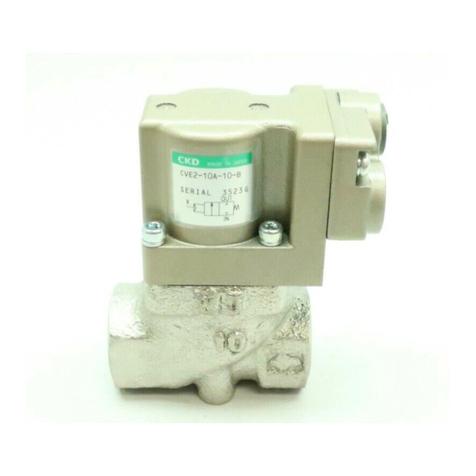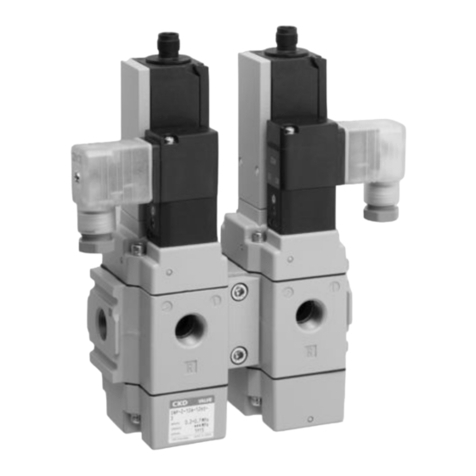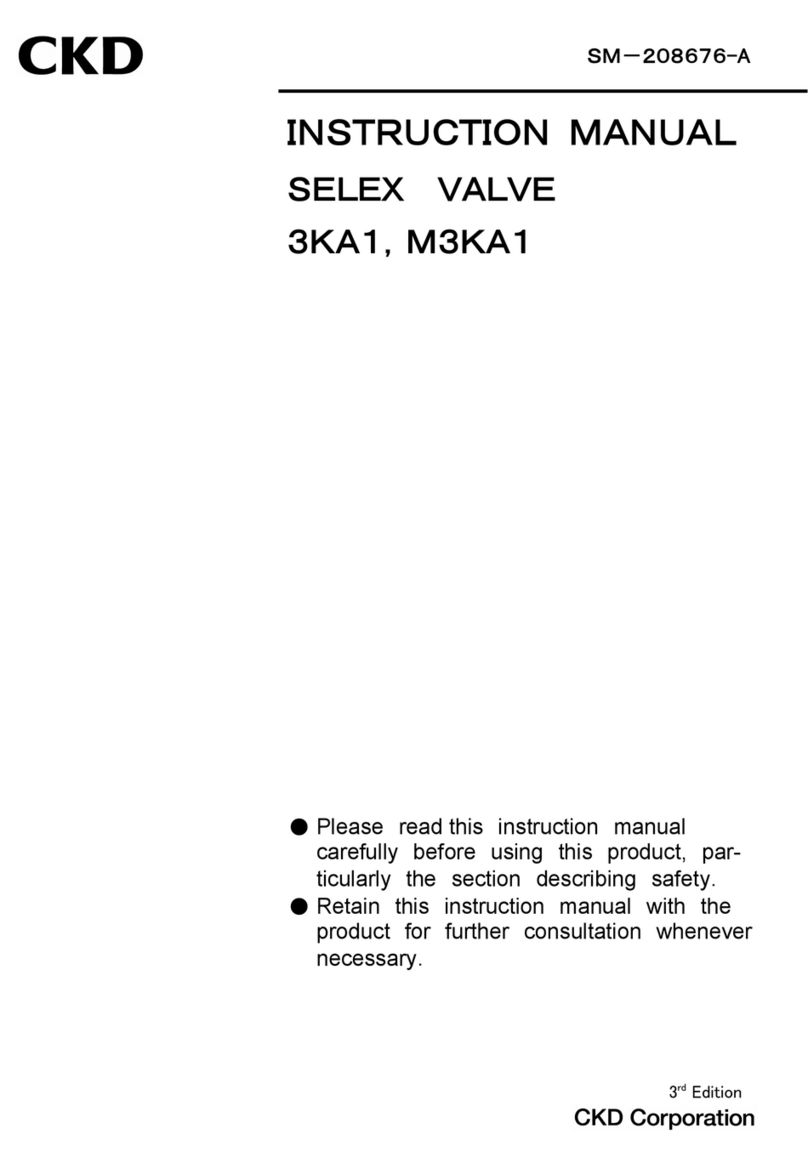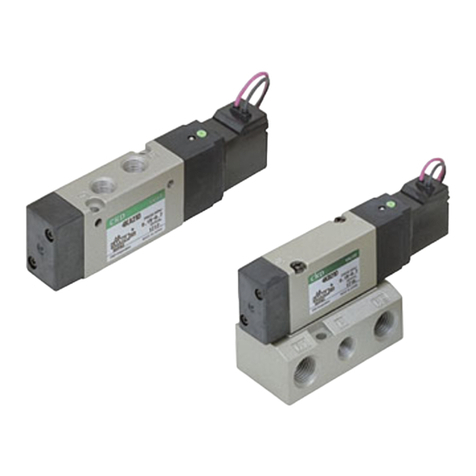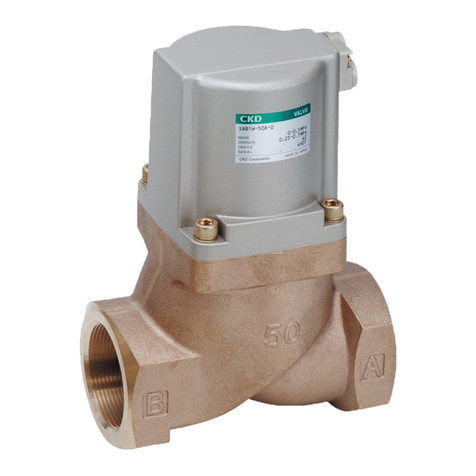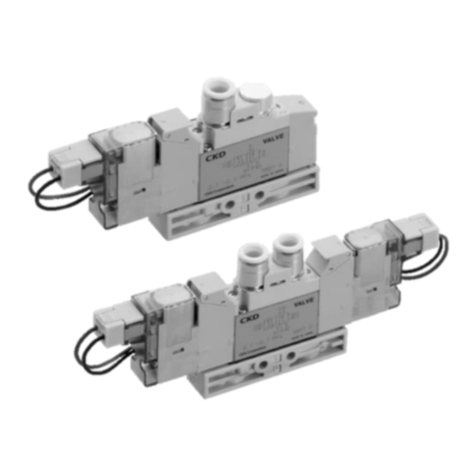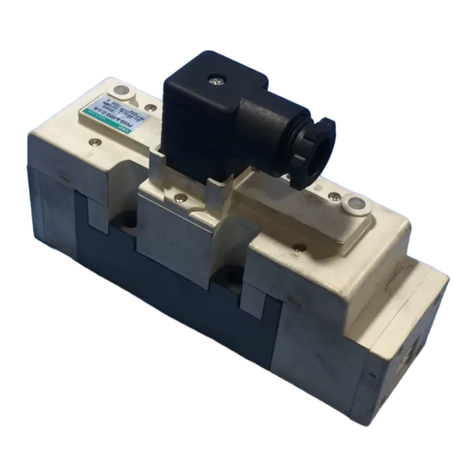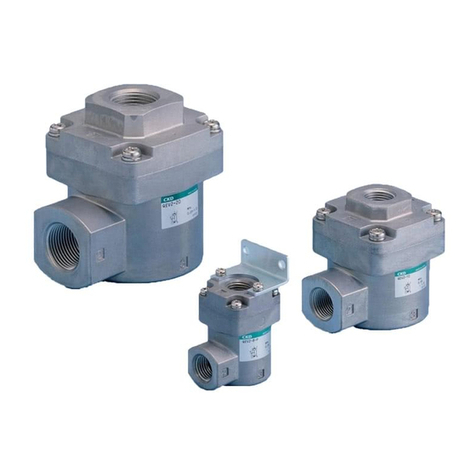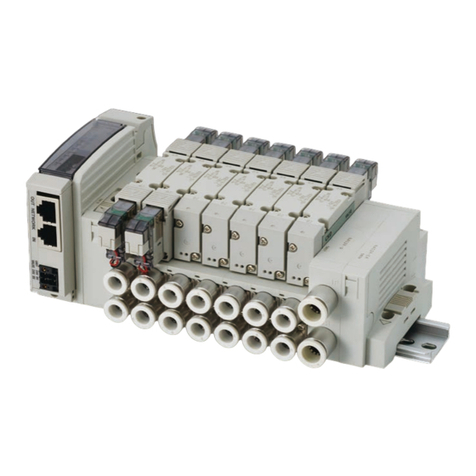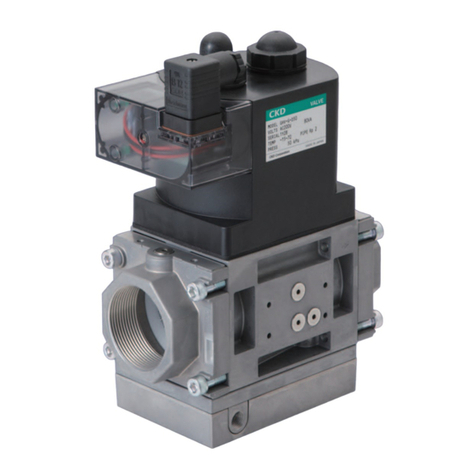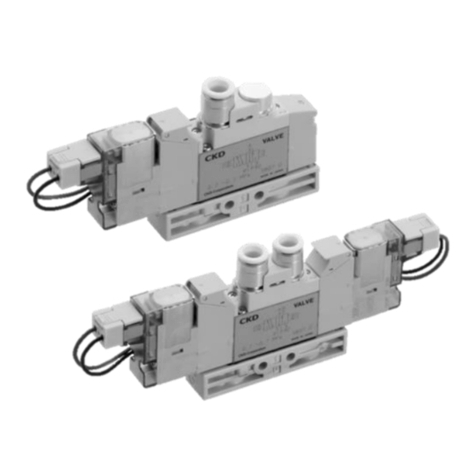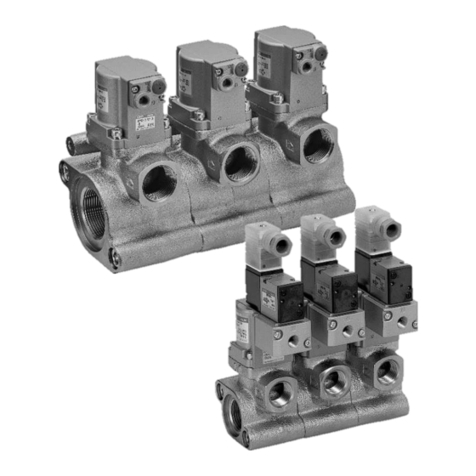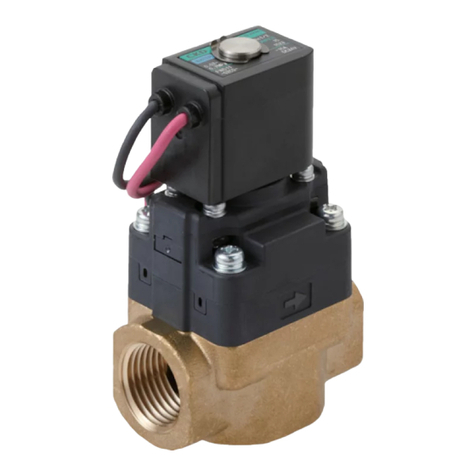
[SM-200164-A/4]
−4−
UNPACKING (Section 3)
Bags containing solenoid valves should be opened only
when you are ready to connect the valves to the pipes
immediatelyafterward.
Ifbagsareopenedbeforethevalvesarereadytobecon-
nectedtothepipes,theentryofforeignmatterfromthe
piping ports could cause the solenoid valves to fail or
malfunction.
INSTALLATION (Section 4)
Ifyouhavetousetheproductunderconditionsthatare
differentfromthespecifiedconditionsorifyouintendto
usetheproductforaspecialapplication,besuretocon-
sultusabouttheproductspecificationsbeforeusingthe
product.
ENVIRONMENT (Section 4.1)
a) Inadustyenvironment,foreignmattermayentereven
throughtheexhaustport.
Themovementoftheexhaustvalvecausesarespiratory
actionattheexhaustvalve,whichmaycauseinhalationof
foreignmatterneartheexhaustport. Thispotentialsit-
uation would be worse if the exhaust port is facing up-
ward. Attachasilencertotheexhaustportorhavethe
exhaustportfacedownward.
b) Keep the solenoid valve system dry. Take care to
avoiddirectcontactwithdrippingwaterorsplashesof
cuttingoil.
If the solenoid valve system is wet by a direct contact
withwaterorcuttingoil,anelectricalleakorburntsole-
noid coils may result. Protect the solenoid valve system
byusingacoverorbyinstalling
itinsideapaneledcasing.
Ifthecylinderrodissplashedwithcuttingoil,theoilmay
penetrate through the cylinder into the secondary side
piping ofthe solenoid valve. This must be prevented to
avoidmalfunctions. Consultusforpreventivemeasures.
c) Thecoilswillproduceheat.
Particularly if the solenoid valve system is installed in a
controlboardorifthesolenoidcoilsneedtobeenergized
foralongtime,considerprovidingsufficientventilationto
releasetheheat. Thecoilscangetveryhot.
d) Do not use the solenoid valve system in an atmos-
pherethatincludesacorrosivegasorsolventvapors.
Do not use the solenoid valve system in an atmosphere
that includes a corrosive gas such as the sulfur dioxide
gasorinanatmospherethatincludessolventvapors.
e) Vibrationsandshocks
Do not subject the solenoid valve system to vibrations
50m/s2orstrongerorshocks300m/s2orstronger.
!
CAUTION:
!
CAUTION:
!
CAUTION:
